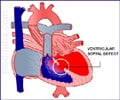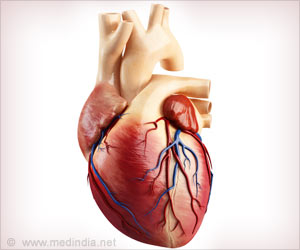The effectiveness of using stents to repair aortas that are torn as the result of accidents has been demonstrated by a UC Davis team of cardiovascular specialists.
The effectiveness of using stents to repair aortas that are torn as the result of accidents has been demonstrated by a UC Davis team of cardiovascular specialists. The researchers will present their findings at the American Association for Thoracic Surgery Aortic Symposium 2010, which takes place April 29-30 in New York City.
"We are always looking for ways to reduce the impact of surgical treatment for patients, especially in instances where there can be multiple and potentially life-threatening injuries," said Royce Calhoun, a cardiothoracic surgeon and principal investigator of the research. "Our results show that it is possible to use stents to repair thoracic aortic tears due to trauma and improve results at the same time."For the study, the team compared outcomes for 31 patients who received endovascular stent implantation with outcomes for 32 patients who received traditional open-chest surgery between June 2001 and October 2009. Those included in the study had sustained blunt-force injuries to their aortas as a result of wide range of traumas, including car or motorcycle crashes, falls or being crushed by heavy objects.
Stents are slender, small fabric sleeves that maintain their shape by means of an outer mesh. During the procedure, a stent is inserted into a blood vessel through a small incision -- typically in the groin -- then guided to the injury site, where it is triggered to expand against blood vessel walls and patch the injured area. In contrast, the standard surgical method requires long incisions down the length of the chest, sometimes extending into the abdomen. Ribs must be spread or removed, and patients usually must be connected to a heart-lung machine.
In general, stent procedures are associated with fewer complications and reduced recovery time than more-invasive surgical approaches. Patients in the UC Davis study who received stents, as compared to those who received open-chest surgery, were in the operating room for less than half the time and needed significantly fewer blood transfusions. The group who received stents also experienced less kidney failure and had a lower death rate.
While traditional open-chest surgical methods remain appropriate in certain circumstances -- for example, when multiple branches of the aorta are injured in addition to the aorta -- Calhoun said the study shows promise for the endovascular technique becoming the preferred approach for treating aortic tears. Moreover, while stents can be a temporary treatment until a patient's condition allows a more definitive procedure, follow-up care of the study participants has shown no evidence of stent-related problems or issues for those who were still growing physically.
"Patients in the study are doing really well," said Calhoun, who in 2006 helped launch the UC Davis thoracic endovascular aortic repair program, which combines the institution's extensive expertise in vascular medicine, surgery, cardiology and trauma care. "We're very optimistic -- even if stents prove in the long-run to be most appropriate only as a temporary fix for aortic tears -- that this procedure can save lives."
Advertisement
Advertisement
RAS









